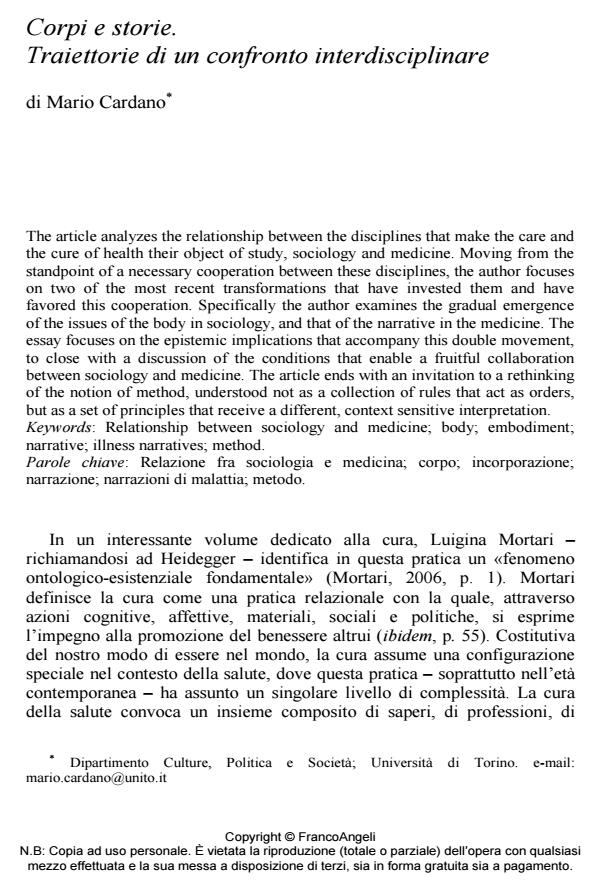Corpi e storie. Traiettorie di un confronto interdisciplinare
Titolo Rivista SALUTE E SOCIETÀ
Autori/Curatori Mario Cardano
Anno di pubblicazione 2015 Fascicolo 2015/3
Lingua Italiano Numero pagine 10 P. 34-43 Dimensione file 372 KB
DOI 10.3280/SES2015-003004
Il DOI è il codice a barre della proprietà intellettuale: per saperne di più
clicca qui
Qui sotto puoi vedere in anteprima la prima pagina di questo articolo.
Se questo articolo ti interessa, lo puoi acquistare (e scaricare in formato pdf) seguendo le facili indicazioni per acquistare il download credit. Acquista Download Credits per scaricare questo Articolo in formato PDF

FrancoAngeli è membro della Publishers International Linking Association, Inc (PILA)associazione indipendente e non profit per facilitare (attraverso i servizi tecnologici implementati da CrossRef.org) l’accesso degli studiosi ai contenuti digitali nelle pubblicazioni professionali e scientifiche
The article analyzes the relationship between the disciplines that make the care and the cure of health their object of study, sociology and medicine. Moving from the standpoint of a necessary cooperation between these disciplines, the author focuses on two of the most recent transformations that have invested them and have favored this cooperation. Specifically the author examines the gradual emergence of the issues of the body in sociology, and that of the narrative in the medicine. The essay focuses on the epistemic implications that accompany this double movement, to close with a discussion of the conditions that enable a fruitful collaboration between sociology and medicine. The article ends with an invitation to a rethinking of the notion of method, understood not as a collection of rules that act as orders, but as a set of principles that receive a different, context sensitive interpretation.
Parole chiave:Relazione fra sociologia e medicina; corpo; incorporazione; narrazione; narrazioni di malattia; metodo.
Mario Cardano, Corpi e storie. Traiettorie di un confronto interdisciplinare in "SALUTE E SOCIETÀ" 3/2015, pp 34-43, DOI: 10.3280/SES2015-003004